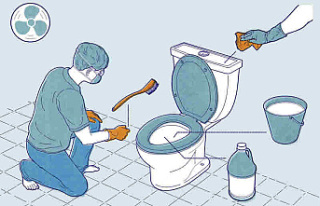Taxidermy is a skill that preserves an animal, allowing future museum visitors and scientists to see what the creature looked like when it was alive. To create a quality mount, you need to get the animal to the taxidermist quickly and in the best condition possible.
This means ensuring it is safe to move and protect from the elements.
1. Skin the Animal
Tax is a complex process that requires many skills, including carpentry, woodworking, tanning, molding, and casting. It also requires artistic talent to sculpt and paint. The process of preserving animals for display dates back thousands of years. Today, we use a variety of materials to make our animals look lifelike, including clay, glass eyes, and polyurethane foam.
A taxidermist must skin the hide and remove all internal organs to prepare an animal for taxidermy. He or she must also salt the skin and rehydrate it, which may take up to three days. Then, the skin is sewn on a form or mannequin. The mannequin is designed to match the size and shape of the animal. Some taxidermists make their own forms, while others order them from companies that specialize in making them.
Hunters can do the initial capping of their own game, but they should leave the detailed work of skinning around the mouth, nose, and eyes to a professional taxidermist. To begin, a taxidermist should cut the hide around the legs and front feet/hooves to separate them from the body. From there, he or she should cut another incision around the neck and head, meeting up with the initial hide cuts and forming a Y shape at each antler or horn base.
Finally, the ear cartilage should be removed from the skull, and the mouth and nose should be cut to the appropriate length. A taxidermist should also cut away any hair or fur that will be visible on the mount and use a knife to scrape the skull clean of all grit and dirt. He or she should then shave the chin and genital area to remove any whiskers that will be exposed on the mount.
2. Tanned the Skin
If the animal is small enough, the hide can be tanned right after it is skinned. This is called dry tanning. It takes a little more time than wet tanning, but it is much less expensive and can save the taxidermist a lot of work. For bigger animals like deer and bears, the skin is often shipped out to a tannery for processing, which could take months.
When an animal dies, it is usually taken to a professional taxidermist who will preserve its skin and stretch it onto a fake body. The word “taxidermy” comes from the Greek words taxis (meaning “arrangement”) and derma (skin). This process aims to produce an accurate representation of the animal in its living state for exhibition or scientific study.
Taxidermy is not only a beautiful way to display trophies, but it can also be a valuable tool for science. For example, the stuffed platypus that European explorers sent back home from Australia in the 1700s helped prove that platypuses really existed.
Before the tanning process begins, the hide needs to be cooled down as soon as possible. Ideally, it should be placed in a cooler with plenty of ice until the taxidermist can reach it. If this is not possible, the hide should be salted to prevent bacteria from forming and causing hair slippage.
There are many different methods for tanners, and the best one depends on the type of hide and the kind of animal. For example, fish must be carefully tanned to avoid losing color. It is helpful to have small dentistry tools or an X-Acto knife on hand for this step, and it is important to remove any remaining flesh from the skin before salting. Then, the skin is soaked in cool water and table salt for several hours to remove the moisture and prepare it for tanning.
3. Mounted the Animal
Once the hide has been dried, it's time for the taxidermist to mount the animal. The process of mounting involves pinning the skin over a form. Most modern forms are made from hard plastic-like foam, but in the past, they were made out of wood, clay, twine, straw, and even metal. The taxidermist adds clay and other materials to the form to make it the right shape for the skin. Glass eyes are also added to make the animals look alive.
Before the skin is mounted, hunters must follow proper pre-mount taxidermy tips. This will help prevent damage to the animal that could ruin the finished product. For example, it's best to field dress the animal as soon as possible. This means hunters should remove the head, tail, and all other internal organs. This will prevent the hide from becoming swollen, moldy, or rotted. It's also important to use a clean knife to remove the skin. A dirty knife can cause hair slippage and other problems. It's also a good idea to keep the animal in a cooler with ice until it can be delivered to the taxidermist.
When delivering the animal to the taxidermist, hunters should try to get it there as soon as possible. It's a slow-moving business, and the sooner an animal is delivered to a taxidermist, the better chance it has of getting back on display quickly. It's also important to avoid slitting the neck of a deer, as this can damage the hide and ruin the trophy mount. Instead, try to make a high-shoulder shot to kill the animal quickly and avoid cutting the hide.
Finally, hunters should be sure to pack their heads in a box with plenty of bubble wrap or paper and ship it overnight or two-day express. This will ensure that the head doesn't thaw and lose its shape during shipping.
4. Painted the Animal
Taxidermy may creep some people out, but it's not nearly as sinister as the movies make it out to be. It's a mix of several different disciplines, including sculpting, woodworking, sewing, and painting. It's also a huge business, with professional taxidermists raking in billions of dollars yearly.
After the skin dries, the taxidermist paints the animal to create a lifelike appearance. A good taxidermist takes a lot of time to get the colors right, as even the slightest deviation from reality can ruin the look of the finished piece.
This is where the best taxidermists separate themselves from the rest of the competition. It's all about getting the coloration to match the original animal as close as possible, especially around the eyes and nose. Experiment with the colors until you find a combination that you like.
In addition to painting, the taxidermist will probably add final touches like eyes and other adornments. He or she might also use modeling clay to sculpt the animal's face and to create veins and tendons. The eyes are usually glass or plastic, but the noses can be made of various materials, including brass and ivory.
Once the animal is complete, it's important to take care of it. This means keeping it away from sunlight and in a climate-controlled area of the house. Dampness can lead to mildew, and excessive dryness can cause hides to crack and split. You should also dust the mounts periodically to keep them looking clean and realistic. Place them in wooden crates sold at your local taxidermist or hardware store for extra protection. For added insulation, consider putting some No Pest Strips or silica gel packets in the crates to prevent pest infestation.
5. Displayed the Animal
The most common way for a hunter or fisherman to preserve and display a kill is by bringing it to a taxidermist, who will skin it, prepare the flesh, and mount it for display. Taxidermy is a fascinating art that incorporates sculpting, woodworking, sewing, and painting elements. It's also a form of art that is incredibly personal and requires the artist to come to terms with the death of animals.
The earliest forms of taxidermy were crude affairs. Animals were gutted, stuffed with straw or cotton, and sewn up. Decay and infestation were problems until Jean-Baptist Becoeur developed an arsenic-based soap that worked as a repellent. The first truly modern approach to taxidermy came with the Great Exhibition of 1851 in London, which showcased new techniques for displaying a wide variety of natural specimens.
Many people today are drawn to taxidermy because of the way it allows them to connect with nature. It is also a popular hobby for hunters and fishermen who want to commemorate their achievements. In fact, it's estimated that American taxidermists rake in nearly $600 million per year.
One of the best ways to learn how to do taxidermy is by taking a class. There are a number of reputable taxidermy schools in the United States. The best schools will offer instruction from experienced taxidermists who can teach students the basics of preparing and mounting an animal.
While learning taxidermy may seem daunting at first, it's actually not as hard as it seems. Once you have the hang of it, doing your taxidermy is easy. Just be sure to take care of your animals and keep them out of direct sunlight, which can cause mildew or cracks. Also, be sure to dust your animals regularly.
Date Of Update: 23 September 2023, 10:53











